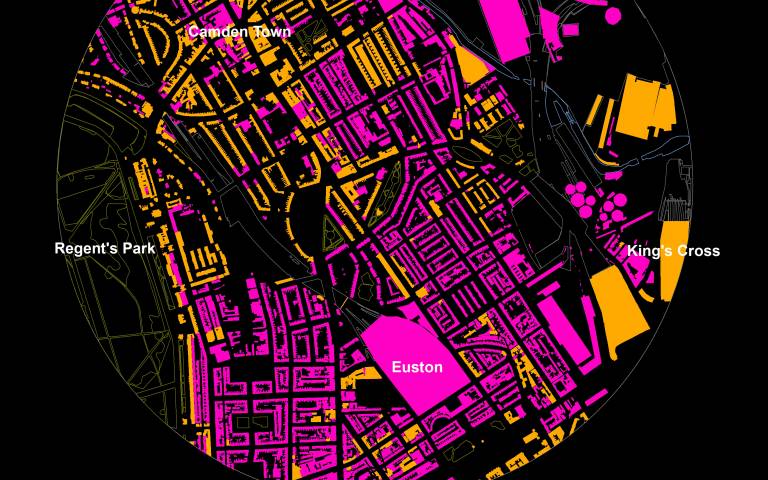Spotlight On: Polly Hudson
19 February 2018
Polly holds an ESPRC PhD Studentship at CASA. She also directs 'Colouring London', a VGI project which will collect, visualise and disseminate quantitative data about London's buildings.

How would you summarise your personal research?
I’m an architectural historian by training, now working in GIS, with a particular interest in VGI and machine learning. I’ve also worked as a furniture maker, a museum designer and a building site manager.
Tell us a little about the research you’re doing at the moment?
I try and identify rules for spatial patterns of demolition in cities that cross time and space. The aim is to use these rules to begin to predict demolition, and in doing so to inform policies with regard to the reduction of waste and the reuse of older stock. London is the focus of my research.
As access is blocked in the UK to information, at building level, on the characteristics of the building stock (age, land use, etc.), I’ve spent a year and a half collecting the data I need on around 20,000 buildings in London. To speed up this process I’ve designed a project, which we’re now building at CASA in collaboration with Ordnance Survey, The Greater London Authority, and Historic England (also project funders) called ‘Colouring London’. The aim is to use VGI to harness and capture the vast body of knowledge held not only by residents and built environment professionals but by those working in local history, historic buildings, archives and community planning; to visualise and disseminate uploaded data and provide examples of how these can be used.
The main challenge is to translate this knowledge into quantitative data that can be used in the scientific analysis of our cites, and in the reduction of energy and waste. I would also like to see it increase both answerability in planning, and the say communities have with regard to what gets destroyed on their streets.
I’m also about to start work with the Leibniz Institute in Dresden to use the data captured so far on London’s stock to train computers to automatically classify building footprints from historical maps. The aim is to identify forms resilient to demolition.
What do you most like about CASA?
Without doubt it would be the rare treat of being able to work in a truly multidisciplinary environment, and to talk with a great bunch of people who bring ideas, knowledge and expertise from all over the world.
Where can people find out more about your work?
https://www.ucl.ac.uk/bartlett/casa/people/mphilphd-students/polly-hudson
https://www.researchgate.net/profile/Polly_Hudson
https://www.ucl.ac.uk/bartlett/casa/colouring-london-0
If you’d like project updates for Colouring London, visit the beta site.
To see the full list of our CASA Spotlight On features, click here.
 Close
Close

